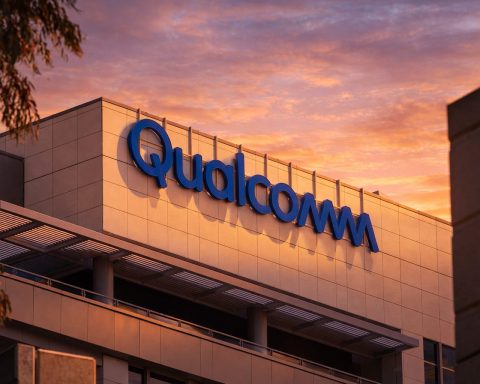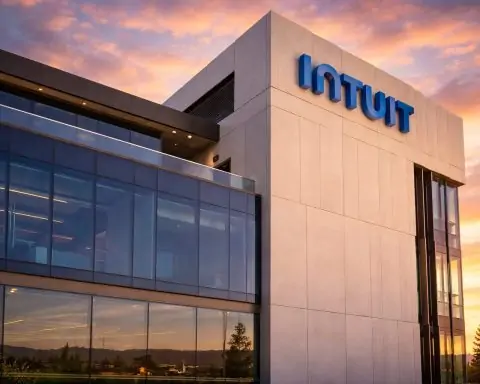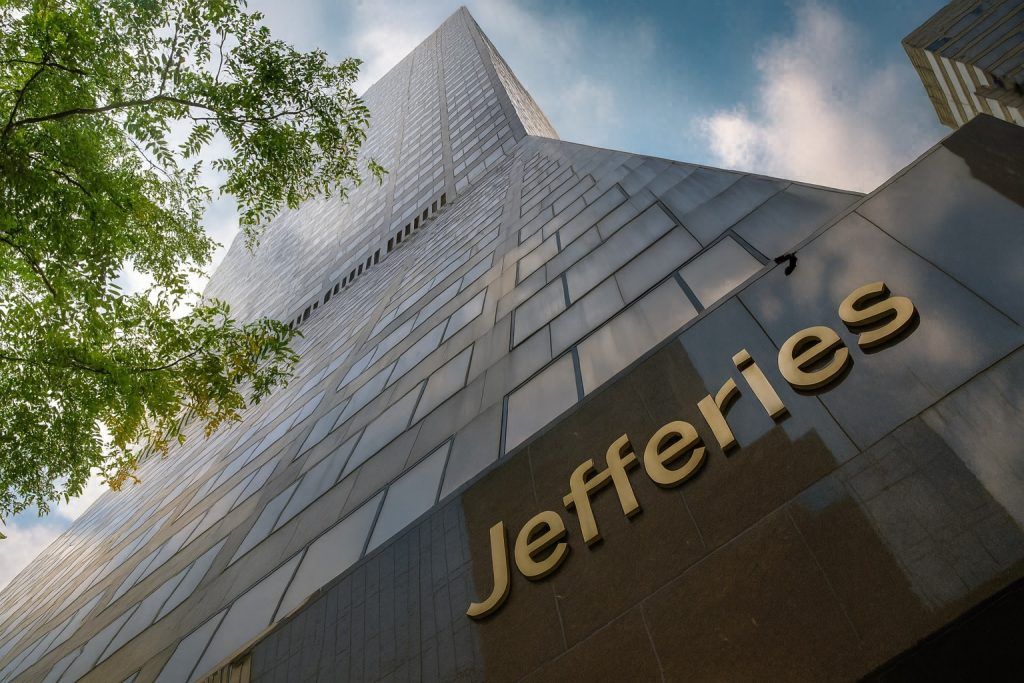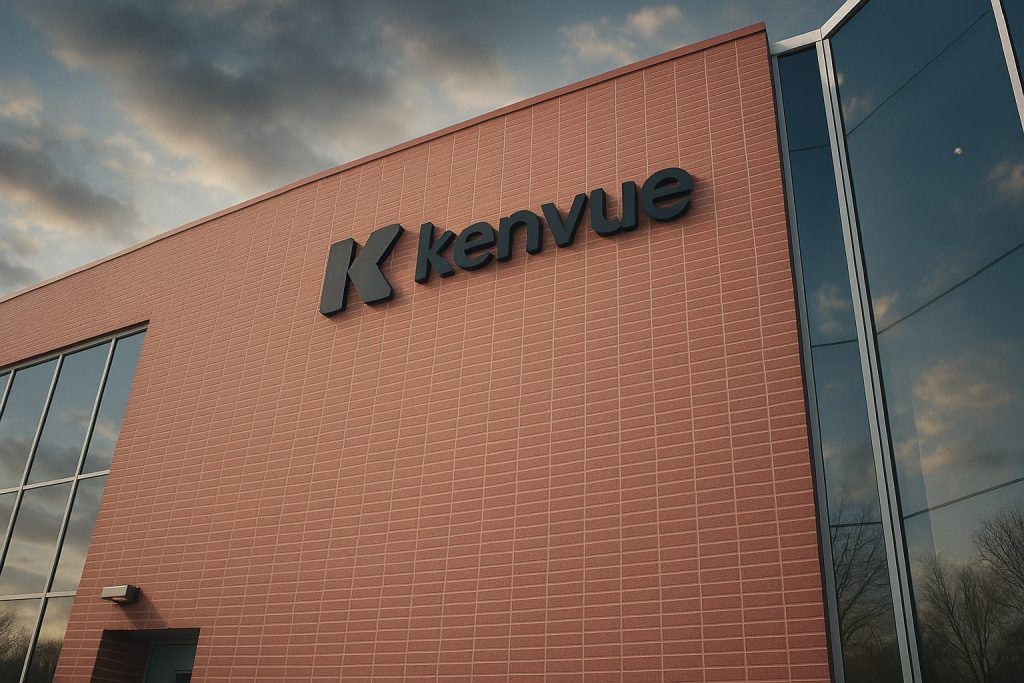- Stock Skyrockets on News: Akanda Corp. stock jumped 36% in after-hours trading on Thursday, Oct. 16, after the company announced a major telecommunications network expansion [1]. Shares spiked from about $2.23 on Oct. 16 to $2.85 by the next morning, a ~28% overnight gain [2] [3]. Earlier this month on October 1, AKAN even surged over 100% intraday, reflecting the stock’s tiny float and outsized demand [4].
- Tiny Float, Big Volatility: With fewer than 730,000 shares outstanding, Akanda’s share float is extremely low [5]. This scarcity means even modest buying can fuel explosive moves. Every new development “hits the tape with force” – a double-edged sword that can send the micro-cap soaring on good news or plunging on profit-taking [6] [7].
- Telecom Expansion Drive: The rally was driven by Akanda’s plan to construct or acquire up to 20 new cellular towers in Mexico by end-2025 [8]. This builds on its existing network of 30 towers and a 700-km fiber backbone already generating revenue in Mexico [9]. The expansion is aimed at boosting network coverage and capacity, positioning Akanda’s subsidiary First Towers & Fiber (FTF) to capture surging demand for mobile data and recurring lease revenue [10] [11].
- Pivot via Merger: Originally a medical cannabis company, Akanda transformed through an August 2025 merger with First Towers & Fiber Corp. FTF is now a wholly-owned unit focused on telecom infrastructure. The acquisition “strengthens Akanda’s telecom position and supports its cannabis development plans,” according to the company [12] [13]. Akanda will continue pursuing its cannabis ambitions even as telecom becomes a key revenue engine.
- Financial Outlook: Akanda’s market cap remains under $2 million and financials are in early stages. The company raised $12 million in convertible funding this year to accelerate tower and fiber builds [14]. Executives say each new tower is expected to generate incremental cash flow and recurring revenue [15]. However, with the core Canadian cannabis project still pre-revenue (no product cultivated yet) [16], Akanda’s future hinges on executing the telecom rollout and eventually monetizing its cannabis assets.
- Cannabis Industry Backdrop: The cannabis sector at large has struggled. A global index of cannabis stocks remains down over 90% from its 2021 peak despite a rebound in 2025 [17]. U.S. federal law still classifies marijuana as a Schedule I drug, keeping investor caution high [18]. Any progress on U.S. legalization or international medical cannabis demand could benefit Akanda’s nascent cannabis business, but for now telecom is the growth story driving the stock.
Stock Price & Recent Performance
Akanda’s stock has been on a rollercoaster. After languishing through 2024 “flying under the radar” [19], AKAN came alive this October. The share price erupted over 100% intraday on Oct. 1 amid a burst of interest in the company’s new direction [20]. Traders cite the ultra-low float – under 0.73 million shares – as a catalyst for these outsized swings. When positive news hits a micro-cap with so few shares available, “even modest buying pressure can create explosive moves” [21]. Conversely, any wave of selling can also trigger sharp pullbacks, making AKAN a volatile ride.
The latest jolt came on October 16, 2025, when Akanda announced an aggressive expansion of its telecom network. In after-hours trading, shares soared 36% on the news [22]. The stock climbed from about $2.23 to $2.85 overnight [23] [24], adding to gains from earlier in the month. By Friday Oct. 17, AKAN was trading around the mid-$2 range – up dramatically week-over-week. Year-to-date, the stock has swung from penny-stock levels to these multi-dollar highs following the company’s strategic pivot.
This surge comes against a mixed market backdrop. The broader Nasdaq index actually hit record highs in early October before retreating by week’s end on shifting sentiment [25]. Akanda’s spike defied that cautious market tone, underscoring how company-specific developments can overshadow macro trends for a stock this small. Still, investors should brace for continued volatility. “A low float can send a stock soaring, but it can also make it volatile to the downside,” one analysis cautioned [26]. In short, Akanda’s tiny share count gives it torque – amplifying both ups and downs.
Telecom Expansion Fuels New Growth Strategy
The catalyst behind Akanda’s revival is an ambitious move beyond cannabis and into telecommunications infrastructure. On Oct. 16, the company revealed plans to add up to 20 new cellular tower sites in Mexico by the end of 2025 [27]. This initiative, executed through wholly-owned subsidiary First Towers & Fiber Corp. (FTF), will expand on FTF’s existing footprint of 30 operational towers and a 700-kilometer dark fiber network across Mexico [28]. The goal: strengthen coverage, boost network capacity, and capture long-term recurring revenue from telecom leases.
Management is framing the expansion as a game-changer. “Expanding our tower network is a clear step in executing our growth strategy,” said Chris Cooper, President of FTF, adding that “each tower has the potential to not only strengthen connectivity across Mexico but also increase our recurring revenue” and solidify Akanda as a preferred partner to major telecom players [29]. Indeed, FTF has positioned itself inside Mexico’s largest communications project – the Altán Redes “Red Compartida” initiative, a $7 billion public-private network build-out aimed at reaching 92% of the population. FTF is a preferred contractor in Altán’s national telecom project, which already spans 11,000+ towers and 24 million people served [30]. Every new tower Akanda builds under this program should slot into pre-existing demand, backed by long-term contracts to host carriers’ equipment.
The expansion is being funded and executed at rapid pace. Akanda disclosed it secured $12 million in convertible financing to help bankroll the tower construction and fiber deployment [31]. Unlike many micro-caps that raise funds just to stay alive, Akanda asserts this capital is targeted at growth projects, not mere survival [32]. The company is effectively betting that upfront investment in hard assets – towers and fiber – will pay off in steady lease revenues for years to come. Each new tower is expected to “drive incremental cash flow” and improve utilization of the fiber backbone, according to the company’s statements [33]. In other words, adding more towers should not only increase sales but also make Akanda’s existing network more efficient and profitable as coverage densifies.
Crucially, Akanda’s participation in the Altán Redes program lends credibility to this venture. The Red Compartida project isn’t some far-off plan – it’s an active network rollout with thousands of towers already live. By securing a foothold as a preferred builder, Akanda has effectively plugged into a nation-scale infrastructure effort. That validation helped turn the company’s scarcity of shares into a virtue: as one market observer noted, “for a company this lean, gaining a foothold in a project of that magnitude changes the entire equation” [34] [35]. It means each tangible win (a tower built, a fiber mile lit, a lease signed) can be “magnified through that limited float”, translating operational progress into outsized market rewards [36]. This dynamic – real infrastructure growth amplified by share scarcity – is what has excited speculators and propelled AKAN’s recent rallies.
Financial Analysis and Future Outlook
Akanda’s bold pivot comes with both promise and risk. On the financial front, the company remains a tiny player navigating two very different industries. Its pro forma market capitalization, even after the latest spike, is only around $1.7–$2 million [37] [38] – truly micro-cap territory. The telecom unit (FTF) does provide an existing revenue stream (from current tower leases and fiber contracts), but detailed financials post-merger have yet to be reported. Meanwhile, the legacy cannabis operations generate minimal revenue so far. (Akanda’s last annual report showed only hundreds of thousands in sales from its early medical cannabis endeavors [39], and its Canadian cultivation site is still in development with no product yet grown [40].)
In the near term, Akanda’s fortunes ride on executing the tower expansion plan efficiently. The company has set a tight timeline – 20 new towers by year-end 2025 – and it must manage this growth with limited resources. Investors will be watching whether Akanda hits its rollout targets and secures tenants for these new sites. Analysts note that delivering on the 2025 tower timetable and locking in long-term lease agreements are key milestones for proving Akanda’s strategy [41] [42]. Any delays or hiccups could test the market’s optimistic narrative. On the flip side, if the company demonstrates tangible progress quarter by quarter (new towers constructed, occupancy agreements signed, rising cash flows), it could bolster credibility and attract a broader investor base beyond speculative traders.
Balance sheet and dilution risk are also important factors. Akanda’s $12 million convertible financing provides growth capital, but as a convertible instrument it could eventually add to the share count if converted to equity. With such a low float, any significant issuance of new shares – whether from conversion of notes or future fundraising – might dilute existing shareholders. The company did enact a reverse stock split earlier in 2025 to maintain Nasdaq listing compliance [43], indicating it’s mindful of the listing requirements (Nasdaq generally requires a $1.00 minimum bid price). Management will need to balance growth needs with careful capital management to avoid eroding the scarcity that has, so far, been a boon to the stock’s momentum.
Despite these risks, Akanda’s leadership paints an optimistic picture. They emphasize that the recent merger created a unique “cannabis + telecom” hybrid model – leveraging a cash-generating telecom arm to ultimately support and expand the cannabis business. In theory, the steady telecom revenues could eventually fund development of Akanda’s cannabis assets without relying solely on dilutive equity raises. “The move strengthens Akanda’s position in telecommunications infrastructure while reaffirming its commitment to its Canadian cannabis development plans,” noted a company news release on the merger [44] [45]. Executives reaffirm that they plan to develop THC and CBD cultivation facilities on the company’s British Columbia farm property, which remains an asset waiting to be unlocked [46] [47]. If and when cannabis markets improve, Akanda aims to be ready to capitalize.
For now, however, investors and analysts are valuing Akanda primarily on the telecom story taking shape. The future forecast for AKAN will hinge on how quickly and cost-effectively it can turn that story into financial results. There are reasons to be hopeful – telecom infrastructure offers relatively predictable long-term revenue once assets are in place, and Mexico’s fast-growing data demand provides a favorable market. If FTF’s expansion succeeds, Akanda could transition from a nano-cap stock into a sturdier small-cap with dual revenue streams. Some industry watchers even speculate on lofty share price potential if everything goes right, though such predictions are purely speculative and should be taken with skepticism [48]. At this stage, Akanda remains a high-risk, high-upside proposition, straddling an established telecom opportunity and a still-untapped cannabis venture.
Cannabis Industry Trends and Impact on Akanda
Akanda’s origins and longer-term aspirations lie in the global cannabis industry, which provides important context for the company’s strategy. In recent years, cannabis stocks have been on a wild ride of their own – largely downward. Since peaking in early 2021, the Global Cannabis Stock Index has plummeted roughly 92% [49], reflecting harsh reality for many over-extended marijuana companies. Oversupply in Canada, slow progress on U.S. federal legalization, and investor fatigue all contributed to a prolonged slump. Even industry giants like Canopy Growth and Tilray saw their market values collapse from prior highs.
There are glimmers of a rebound in 2025. Through the first three quarters of the year, cannabis stocks staged a rally – the global index jumped over 50% in Q3 alone, leaving it up about 11.6% year-to-date by the end of September [50]. U.S. policy developments have also injected periodic optimism. In late 2025, reports that federal authorities were considering reclassifying marijuana from Schedule I (most-restricted status) sparked a surge in pot stocks [51]. Such a move, if it occurred, would be a game-changer, potentially easing banking and research restrictions. However, as of October 2025 cannabis remains an illicit Schedule I substance federally in the U.S., and legalization efforts are uncertain. This regulatory overhang keeps the sector speculative and risky [52], which savvy investors have not forgotten despite short-term rallies.
For Akanda, developments in the cannabis arena are a bit of a double-edged sword. On one hand, the company’s share price has recently decoupled from cannabis sector woes, thanks to its telecom news. In fact, Akanda is one of the rare cannabis-linked names seeing gains while many peers are still digging out of a bear market. If anything, Akanda’s diversification into telecom may insulate it from some cannabis-specific headwinds in the near term. On the other hand, Akanda’s long-run success does depend on cannabis to a significant degree. The company’s mission statement still centers on being an international medical cannabis and wellness platform [53] [54]. It owns cannabis cultivation land and presumably will need favorable market conditions (or a niche medical demand) to make that venture profitable.
Positive news in the cannabis world could therefore lift Akanda further. For example, if Germany or other European countries accelerate medical cannabis adoption (Akanda has had operations in Europe previously [55]), or if Canada’s market stabilizes, it could improve the outlook for Akanda’s products. Any U.S. federal reform or major breakthrough in research could also create a “halo effect” for investor sentiment across all cannabis stocks. Closer to home, Akanda will be watching Canada’s regulatory landscape – as it aims to eventually cultivate THC/CBD in British Columbia, the licensing and market conditions there will determine how quickly that side of the business can ramp up.
Industry observers note that Akanda’s hybrid model is somewhat unorthodox – most competitors stick to either cannabis or another field, not both. This strategy could prove shrewd if executed well, or it could strain a tiny company’s focus. The next year will be telling. If telecom expansion yields real cash flow and cannabis stays muted, Akanda might choose to double down on its telecom division (which could even invite the interest of telecom-focused investors or partners). Alternatively, a resurgence in cannabis markets might entice Akanda to spin up its dormant cultivation projects in earnest, now with a stronger financial backbone behind it.
Either way, the company has given itself multiple shots on goal in two high-growth arenas. “Being part of the largest telecommunications infrastructure project in Mexico is both a responsibility and an honor,” FTF President Chris Cooper said recently, emphasizing the company’s commitment to Mexico’s digital future [56] [57]. In the same breath, Akanda’s leadership reiterates dedication to providing high-quality cannabis products to improve lives [58]. It’s an unusual one-two punch – telecom towers and medical marijuana – but in today’s evolving market, it just might be the recipe that puts Akanda on the map.
Public Outlook
From a public investor’s perspective, Akanda Corp. represents a high-risk, potentially high-reward story at the intersection of two dynamic industries. In the short term, the excitement is clearly around the telecom expansion in Mexico and the revenue streams it could generate. This has given Akanda a tangible narrative (and actual cash flow prospects) that many pure cannabis startups lack. The stock’s recent performance reflects that optimism, but also the speculative fervor that can grip micro-cap names. Caution is warranted – sharp spikes like AKAN’s often invite equally sharp corrections once initial euphoria fades.
That said, Akanda has succeeded in capturing attention with its bold pivot. The coming months will show whether the company can turn that attention into sustained investor confidence. Key events on the horizon include a special shareholder meeting on Oct. 30, 2025 (where remaining formalities of the FTF merger and share structure may be addressed [59]) and progress updates on the tower rollout by year-end. Any concrete signs of execution – such as announcements that new towers are built and leased out to carriers – could further validate the growth plan. Conversely, setbacks or silence could raise questions given the high expectations now baked into the stock.
The broader market climate will also play a role. If equity markets remain volatile or risk-averse heading into late 2025, micro-caps like Akanda may see capital rotate out just as quickly as it rotated in. (Notably, the Nasdaq’s early-October rally gave way to a pullback amid macro jitters [60], reminding investors that sentiment can turn on a dime.) Additionally, any major news – good or bad – in the cannabis sector could sway sentiment for AKAN, due to its still-present cannabis angle.
For now, Akanda’s management will likely focus on what they can control: building telecom assets, securing revenue, and laying groundwork for future cannabis operations. In an industry where many companies are either struggling for identity or fighting for survival, Akanda has chosen an unconventional path to reinvent itself. The stock’s surge indicates that the market sees potential – but realizing that potential is the next challenge. As one analyst summarized, growth for Akanda is “no longer theoretical. It’s steel, signal, and revenue stacking up” [61] [62]. If the company can keep stacking those wins, 2025 could mark the start of an impressive turnaround story. If not, Akanda will serve as another reminder of how quickly fortunes can swing in the fast-evolving cannabis and tech landscape.
Sources: Akanda Corp. press releases and filings [63] [64]; Investing.com [65] [66]; StockTitan/ACCESSwire [67] [68]; TipRanks News [69] [70]; Cantech Letter [71] [72]; New Cannabis Ventures [73] [74]; NerdWallet [75]; TS2.tech [76].
References
1. www.investing.com, 2. www.stocktitan.net, 3. www.stocktitan.net, 4. www.stocktitan.net, 5. www.stocktitan.net, 6. www.stocktitan.net, 7. www.stocktitan.net, 8. www.investing.com, 9. www.investing.com, 10. www.investing.com, 11. www.investing.com, 12. www.tipranks.com, 13. www.tipranks.com, 14. www.stocktitan.net, 15. www.investing.com, 16. www.newsfilecorp.com, 17. www.newcannabisventures.com, 18. www.nerdwallet.com, 19. www.stocktitan.net, 20. www.stocktitan.net, 21. www.stocktitan.net, 22. www.investing.com, 23. www.stocktitan.net, 24. www.stocktitan.net, 25. ts2.tech, 26. www.stocktitan.net, 27. www.investing.com, 28. www.investing.com, 29. www.investing.com, 30. www.stocktitan.net, 31. www.stocktitan.net, 32. www.stocktitan.net, 33. www.investing.com, 34. www.stocktitan.net, 35. www.stocktitan.net, 36. www.stocktitan.net, 37. www.stocktitan.net, 38. www.stocktitan.net, 39. stockanalysis.com, 40. www.newsfilecorp.com, 41. www.stocktitan.net, 42. www.stocktitan.net, 43. greenstocknews.com, 44. www.tipranks.com, 45. www.tipranks.com, 46. www.newsfilecorp.com, 47. www.newsfilecorp.com, 48. stockscan.io, 49. www.newcannabisventures.com, 50. www.newcannabisventures.com, 51. www.nerdwallet.com, 52. www.nerdwallet.com, 53. www.cantechletter.com, 54. www.cantechletter.com, 55. www.cantechletter.com, 56. www.cantechletter.com, 57. www.cantechletter.com, 58. www.cantechletter.com, 59. www.stocktitan.net, 60. ts2.tech, 61. www.stocktitan.net, 62. www.stocktitan.net, 63. www.newsfilecorp.com, 64. www.newsfilecorp.com, 65. www.investing.com, 66. www.investing.com, 67. www.stocktitan.net, 68. www.stocktitan.net, 69. www.tipranks.com, 70. www.tipranks.com, 71. www.cantechletter.com, 72. www.cantechletter.com, 73. www.newcannabisventures.com, 74. www.newcannabisventures.com, 75. www.nerdwallet.com, 76. ts2.tech







